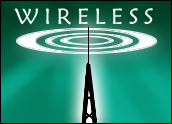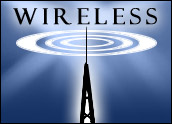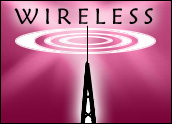
The Federal Communications Commission had a very good first quarter: The government agency raised close to US$20 billion by selling off slices of wireless bandwidth to a variety of companies. As the auction process fades into history, a few questions remain: What impact will the sale have on the wireless market? What changes will take effect due to the recent spectrum auction? What might the FCC’s next step be?
Similar to how it regulates TV channels and radio airwaves, the FCC is in charge of determining how the nation’s wireless bandwidth is used. In addition to devices such as cell phones, items like medical equipment, game controllers and home entertainment remote control systems rely on wireless transmissions. Chaos would ensure if all of these devices were able to select their own spectrum — basically a slice of all the available wireless bandwidth — so the FCC oversees which devices are able to operate in wavelength.
Spectrum basically refers to the size of the spread of the electronic waves that move from a sending system to a receiving system. Both devices have to be capable of sending, collecting and then decoding information as it moves from place to place. In general, the higher the wavelength — say, 300 gigahertz (GHz) as opposed to 100 GHz — the more difficult it is to build the sending and the receiving systems.
New Bandwidth
Periodically, new bandwidth becomes available in one or two fashions. In some cases, engineers develop new technologies so devices can operate in higher wavelengths. In addition, the FCC can decree that certain bands have outlived their usefulness, take them back and use them for different purposes.
Once these new bands become available, the FCC has to determine who should use them. Traditionally, the government agency listened to various interested parties, and then handed out bandwidth to those companies it determined would deliver the best long-term potential benefits to consumers. In 1994, the process changed, and wireless carriers were allowed to bid on the items that they desired.
Much like auctioneers at an estate sale, the government agency establishes a minimum bid for each slice of spectrum. At a designated time, the participants then submit their bids, which remain confidential. The bidding continues until only one participant is left.
The recent auction, which started in January and completed near the end of March, centered on the 700 MHz spectrum, which had been used for analog television broadcasting, specifically for UHF (ultra high frequency) channels 52 through 69.
“With the impending switch to digital television, the FCC determined that the 700 MHz frequency range could be put to better use,” Tole Hart, a research director at Gartner, told the E-Commerce Times. The agency thought that opening up the spectrum would spur delivery of high bandwidth, next-generation cellular services. Consequently, any company broadcasting in that frequency range has until February 2009 to move to another location.
Big Winners
The wireless auction winners looked quite familiar, with Verizon and AT&T being the biggest players that won. “They now have the bandwidth needed to roll out high-speed data services,” Victor Schnee, president of Probe Financial Associates, a telecom market research firm, told the E-Commerce Times. Verizon paid approximately $4.7 billion for the prime block of spectrum, the Block C airwaves. AT&T was awarded the bulk of a B block, and ended up with additional bandwidth in more than 700 cellular markets.
Qualcomm won large chunks of the B and E blocks, and Frontier Wireless was awarded the majority of the low-bandwidth E Block. “EchoStar (now Dish Network) — which partnered with Frontier — was an unexpected participant, and played a more significant role in the bidding than many had anticipated,” Greg Sterling, founding principal at Sterling Market Intelligence, told the E-Commerce Times. These companies are expected to use their new bandwidth to roll out high-speed data and video services in the next few years.
Looking Ahead
Not all of the FCC’s plans came to fruition. The government agency planned to set aside the D block for public safety products. Qualcomm made a significant bid for this spectrum, but the total money offered was below the minimum bids. Consequently, the FCC called it a “no bid” and now needs to come up with a new plan for allocating that section of bandwidth, a process that is expected to start to take shape in the fall.
Figuring out what to do in D block of spectrum is probably the agency’s most pressing issue. By the fall, the government agency could develop a new plan for allocating that spectrum.
A couple of other possible initiatives loom further down the line. There has been talk about moving some more television broadcasts off of their wireless bands and freeing up additional spectrum.
In addition, a battle looms between high-tech equipment suppliers and television content producers. When divvying up television bandwidth in the 1960s, the FCC left a buffer zone between different channels, so adjacent transmissions would not bounce into one another. Since technology is so much more sophisticated now than it was then, high tech companies, such as Dell, HP, Google and Microsoft want to use that space for high speed wireless transmissions.
At the moment, devices that support such services are in the prototype stage. The FCC has conducted two rounds of tests, but no one is sure if the government will give the thumbs up to this plan. In fact, television content companies oppose the idea because they think it will interfere with their transmissions, so the government agency’s next step in the matter is unclear.















































Social Media
See all Social Media